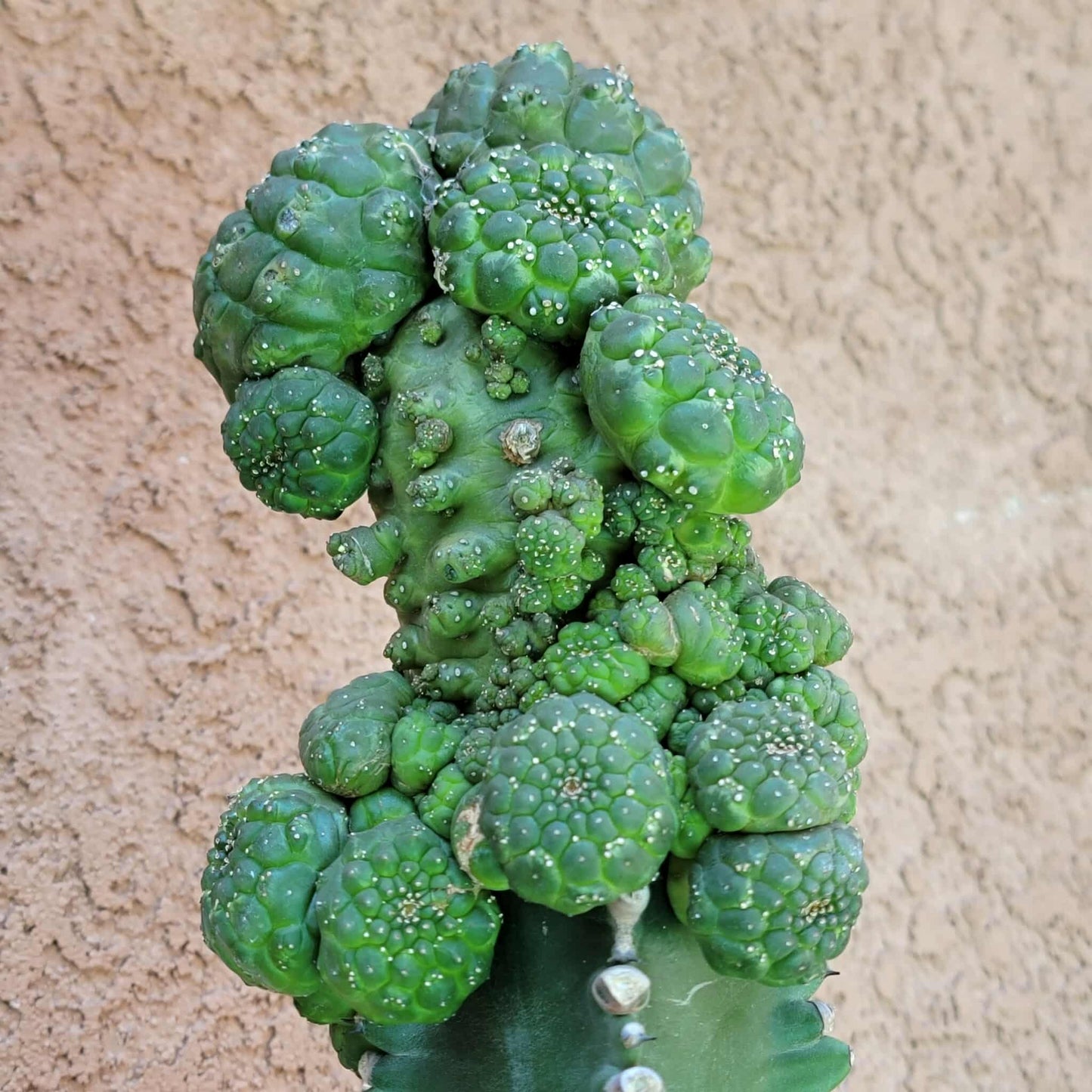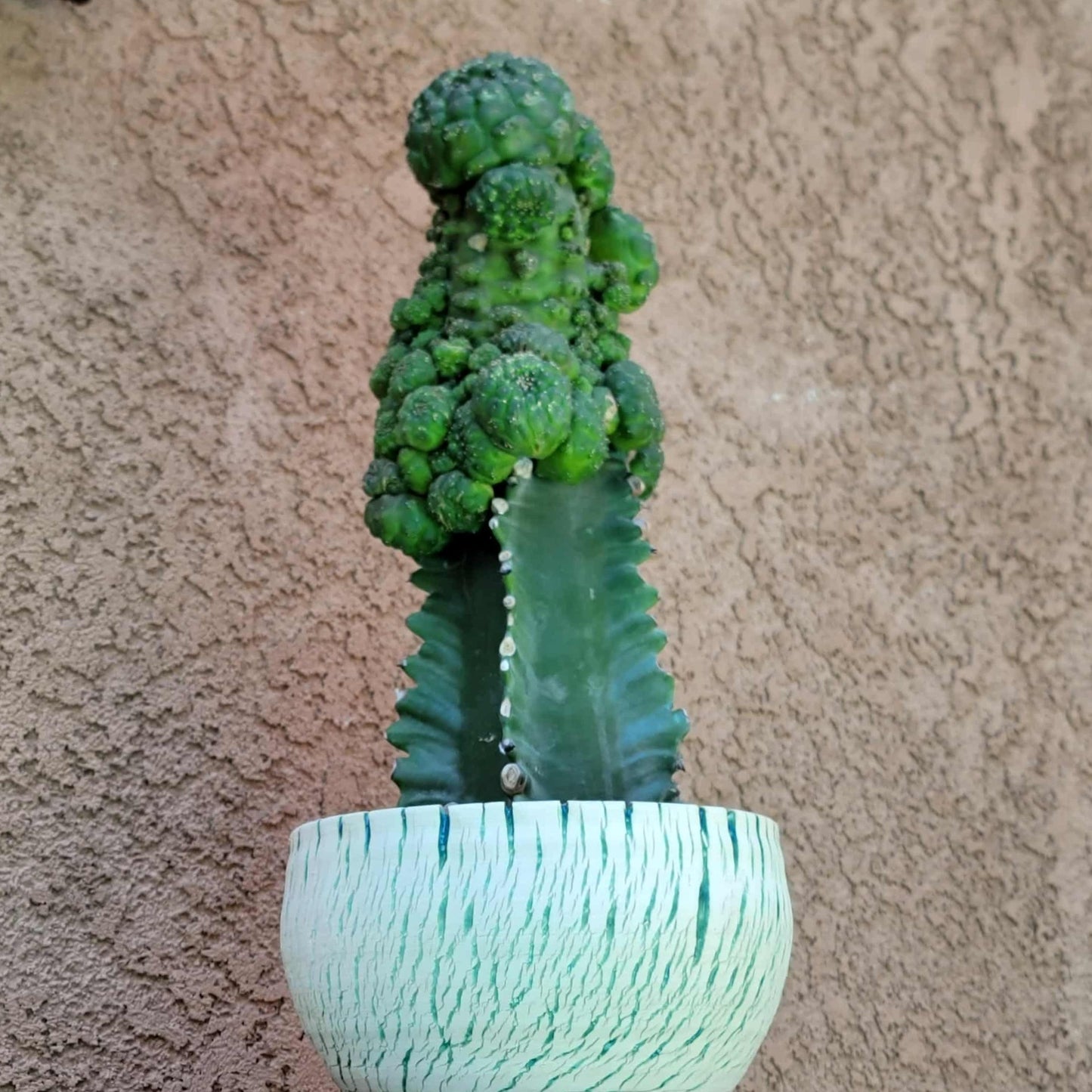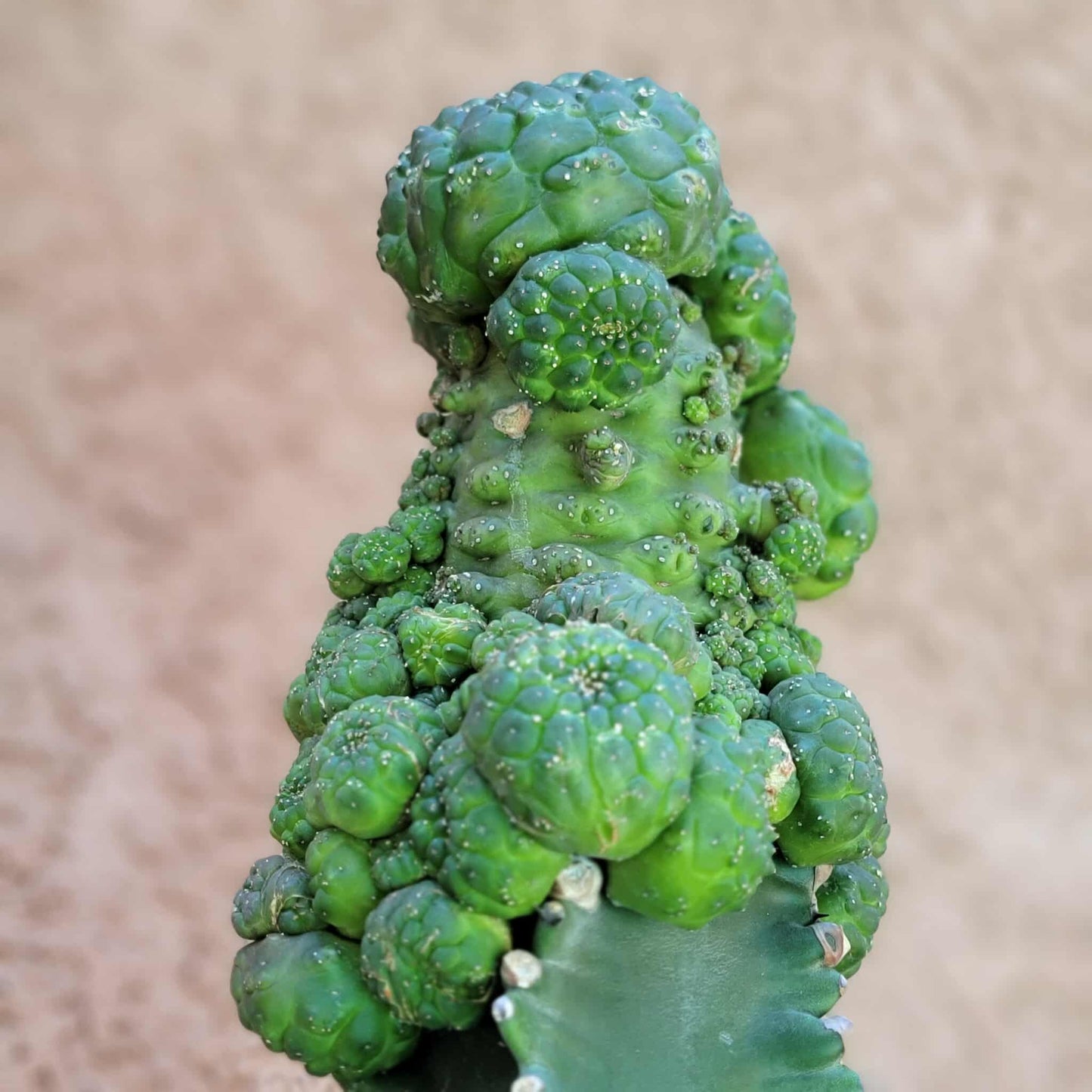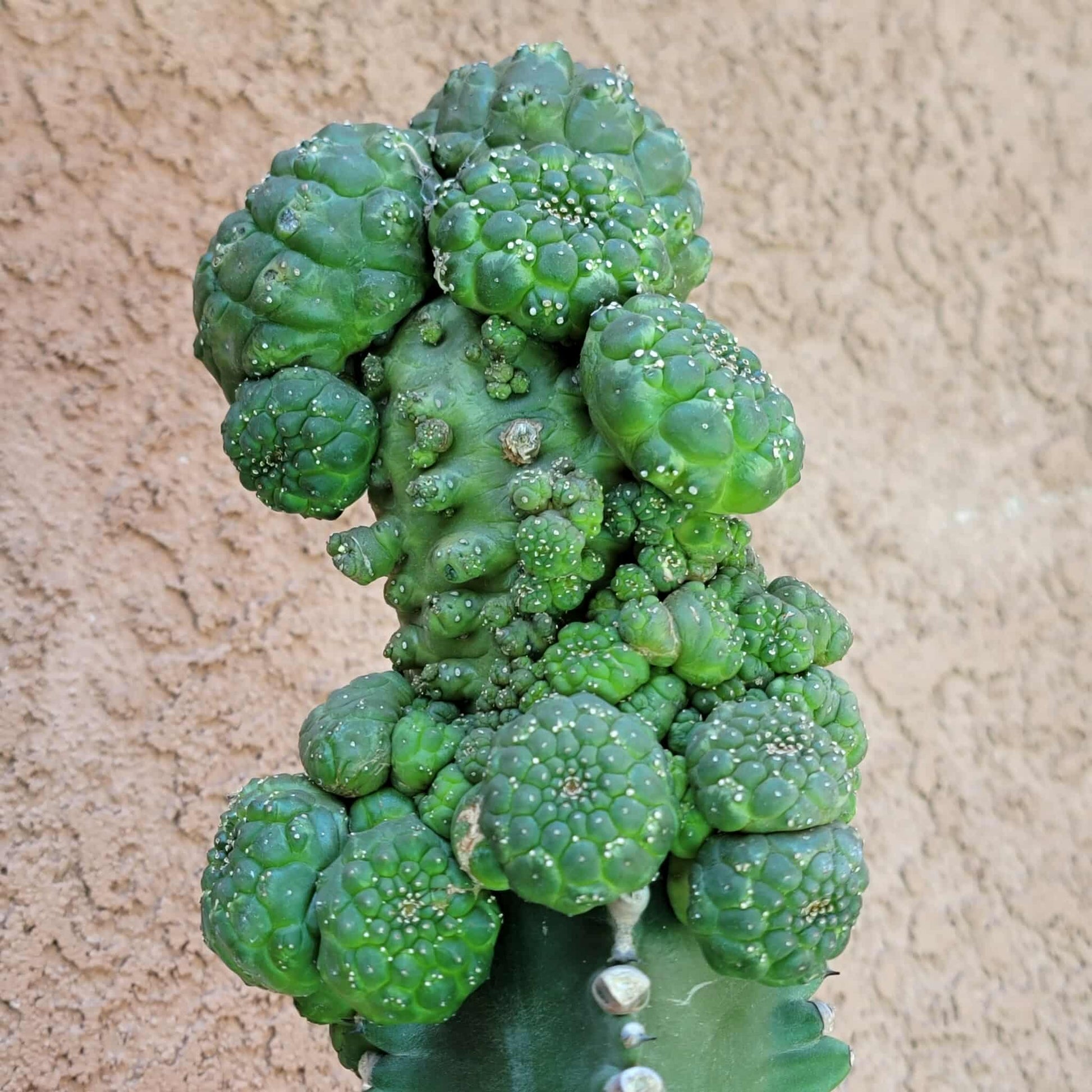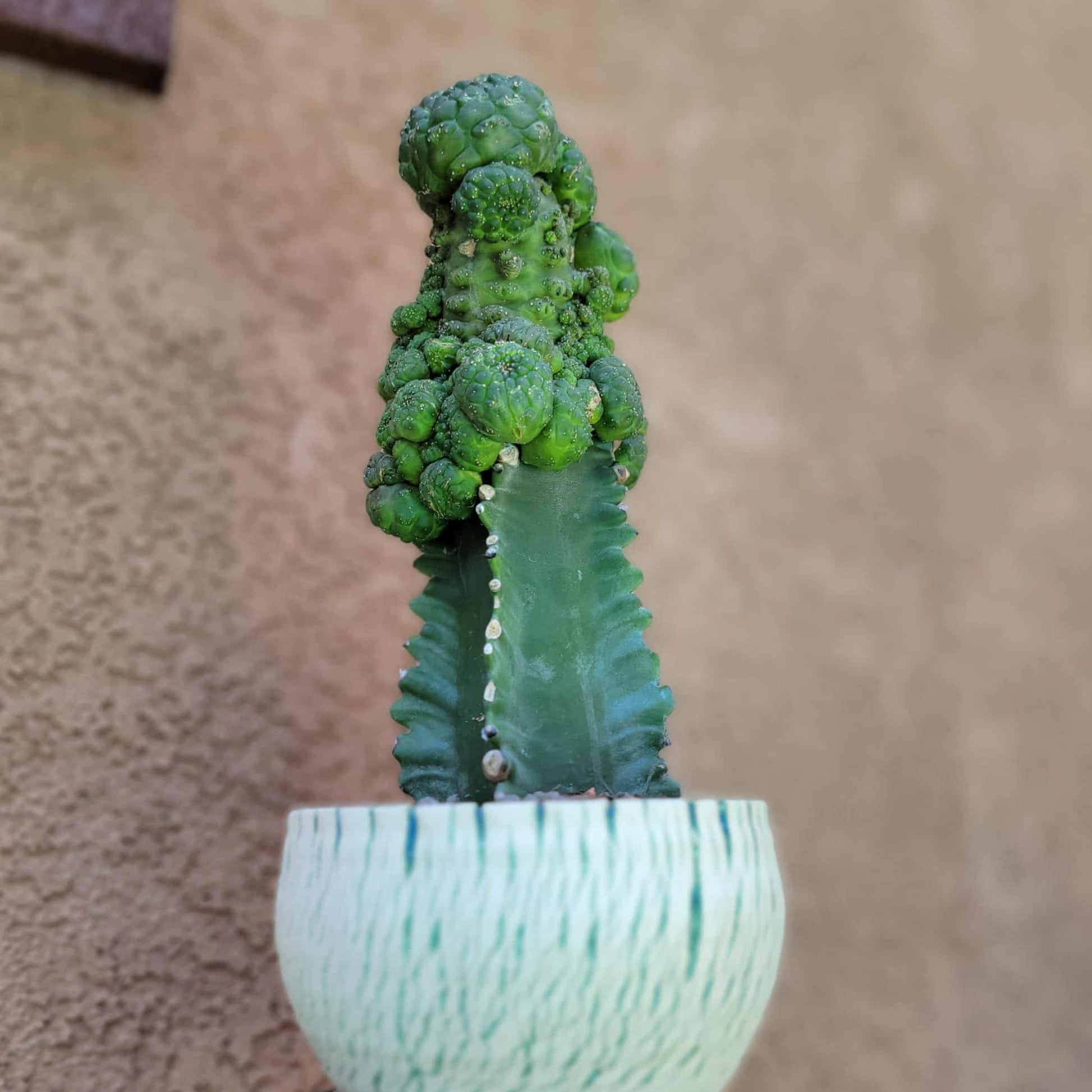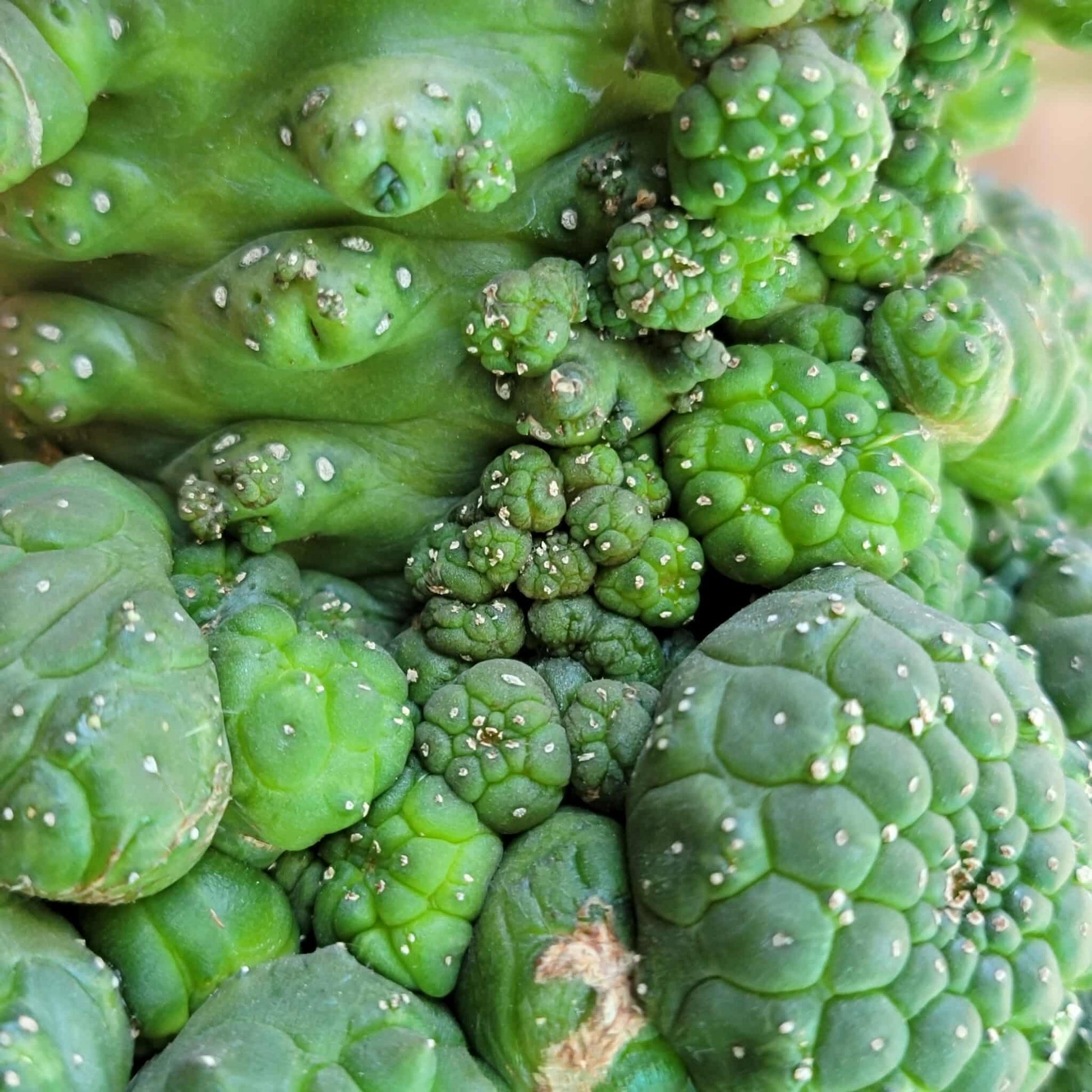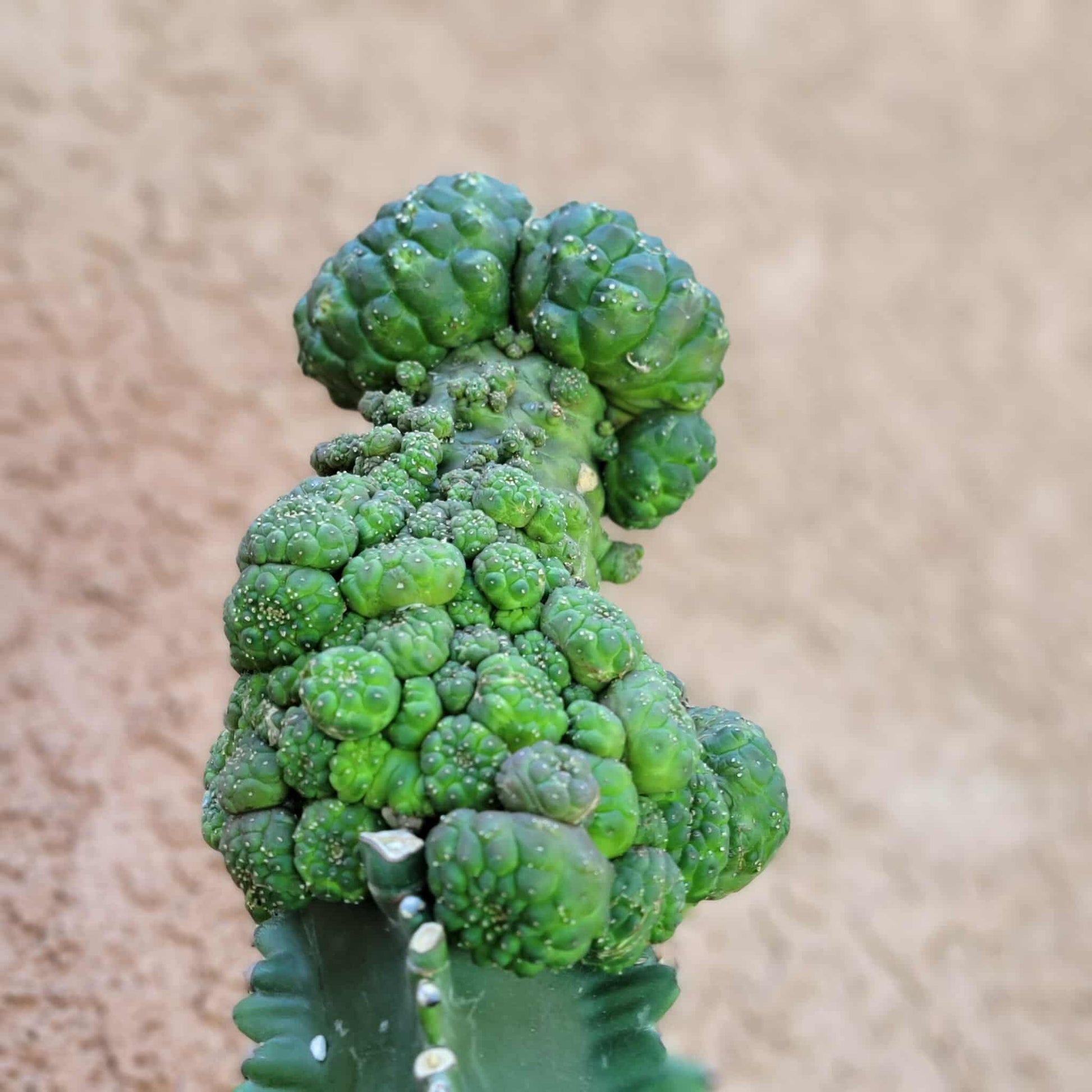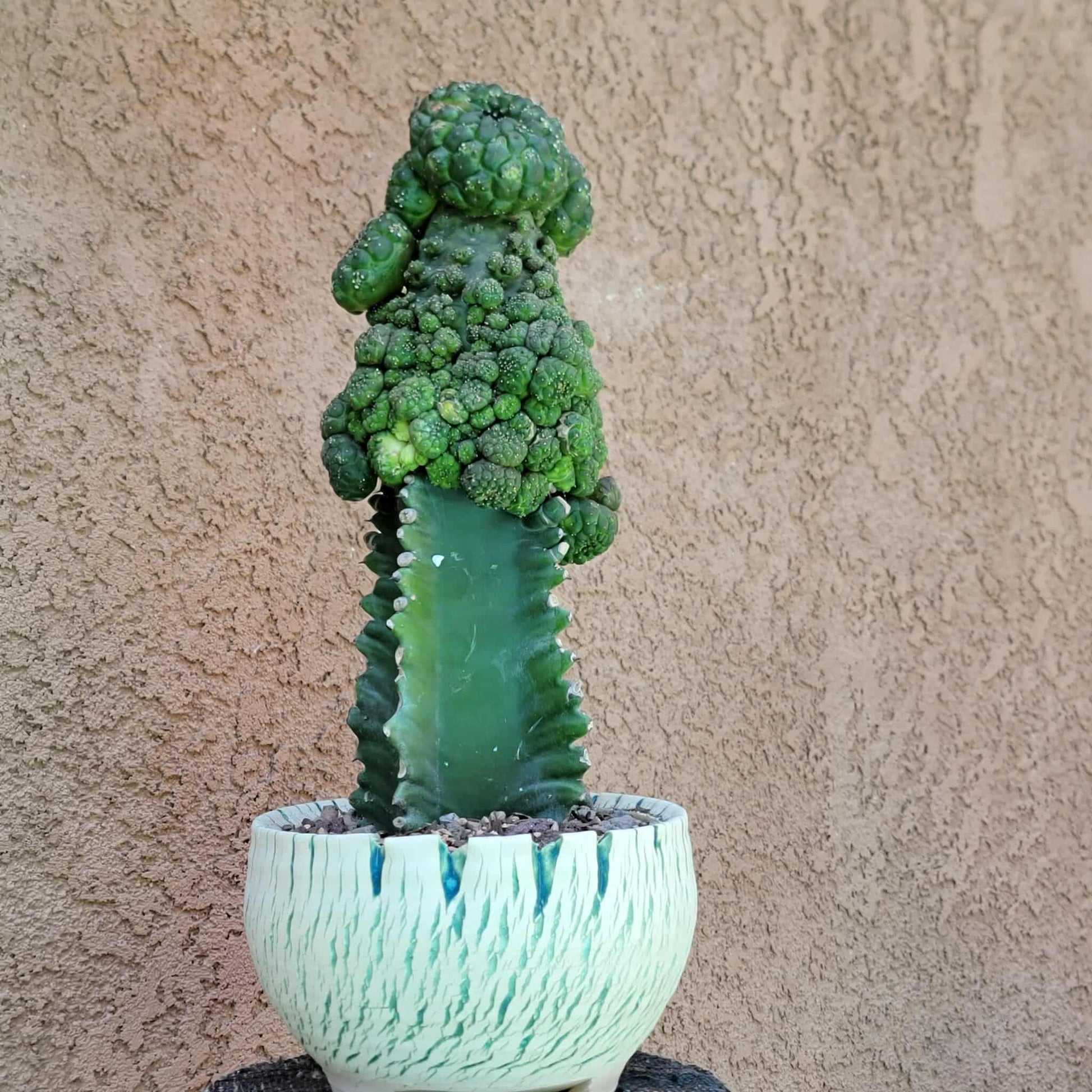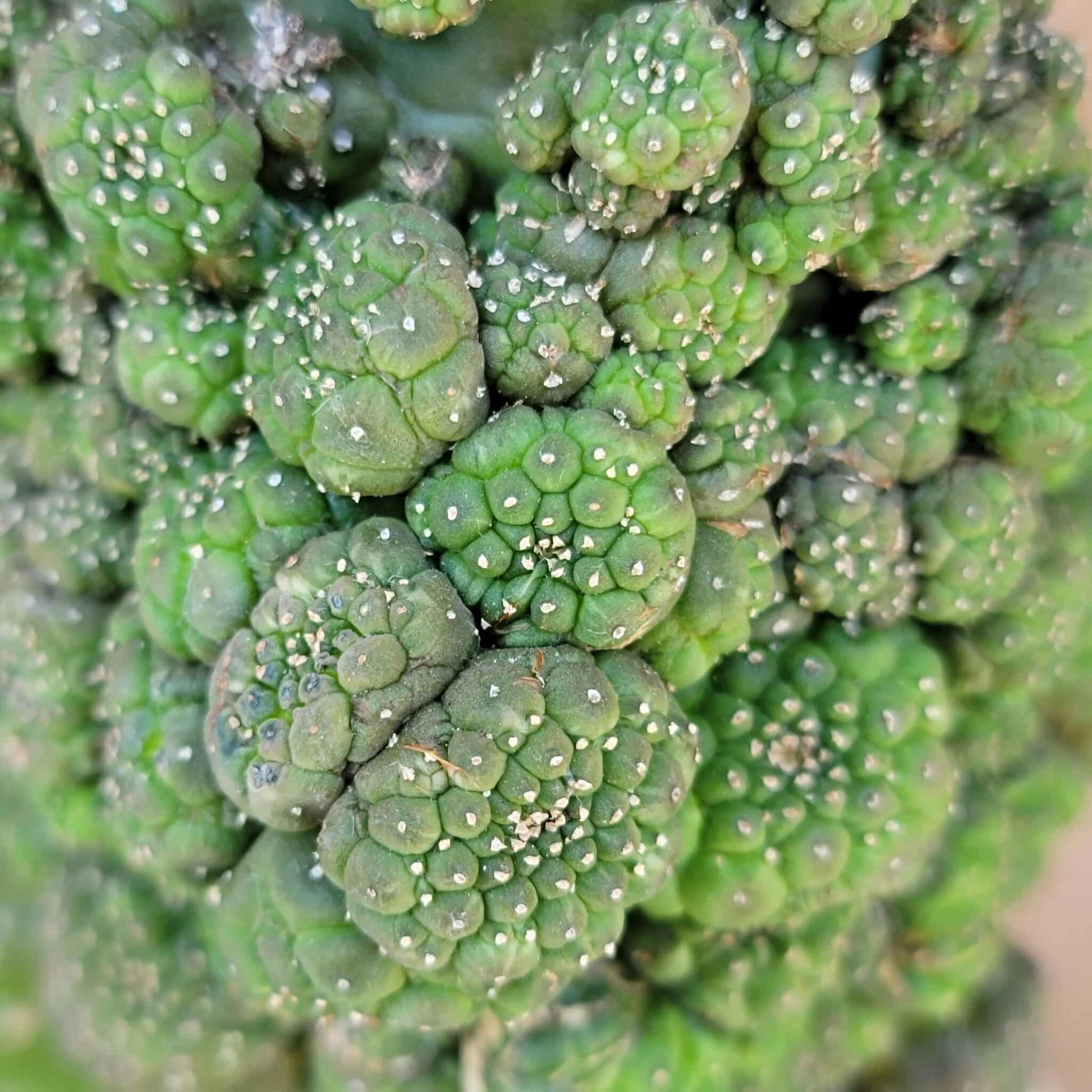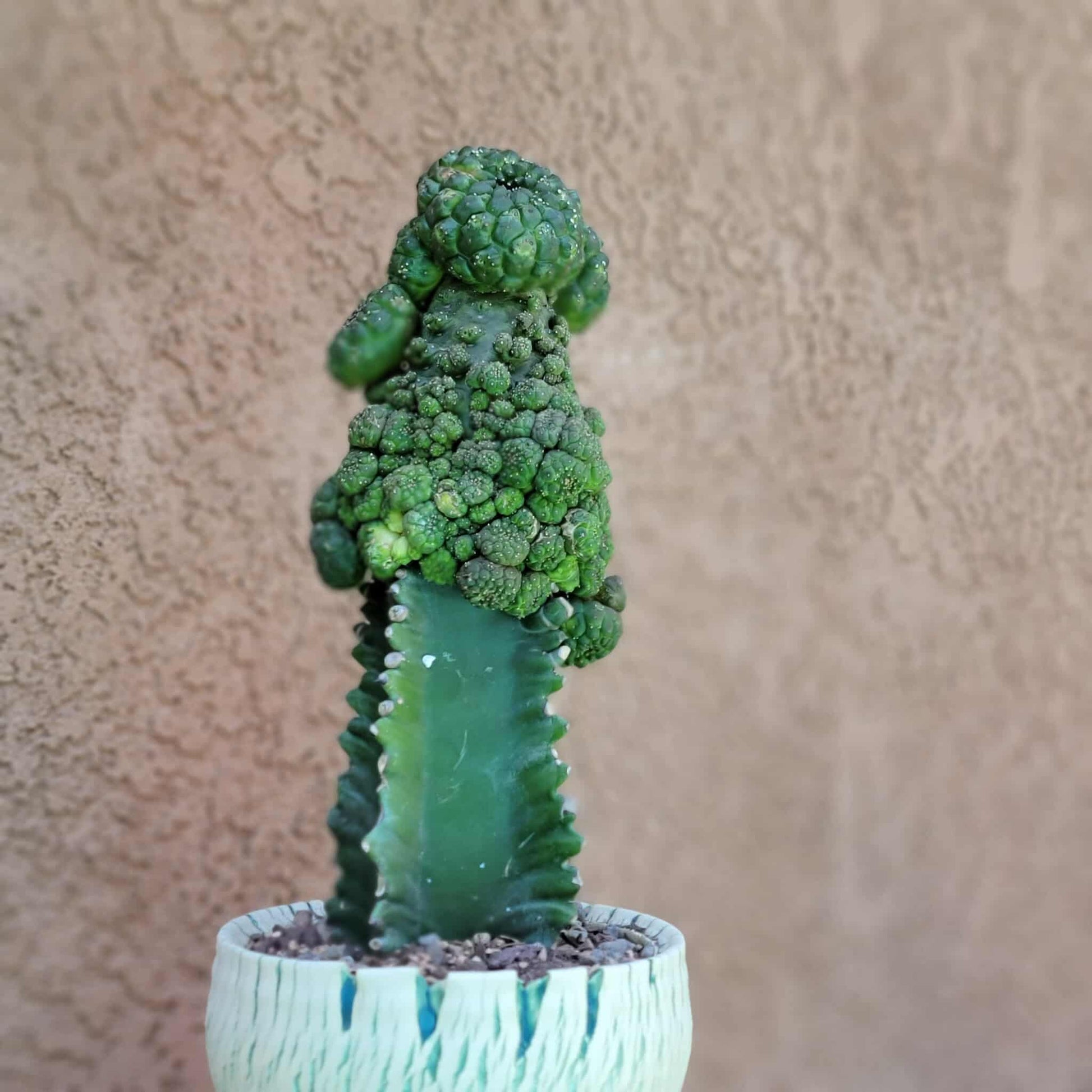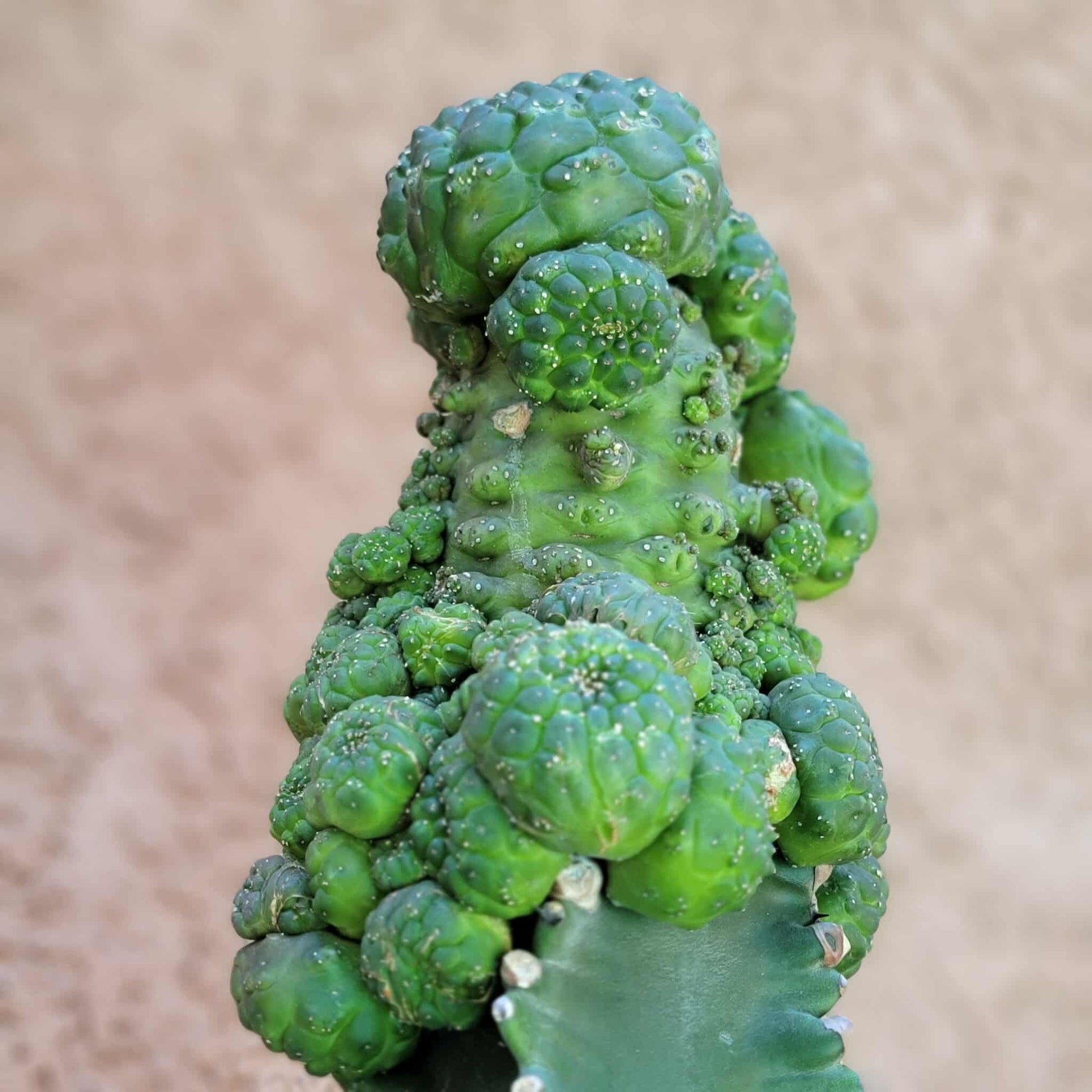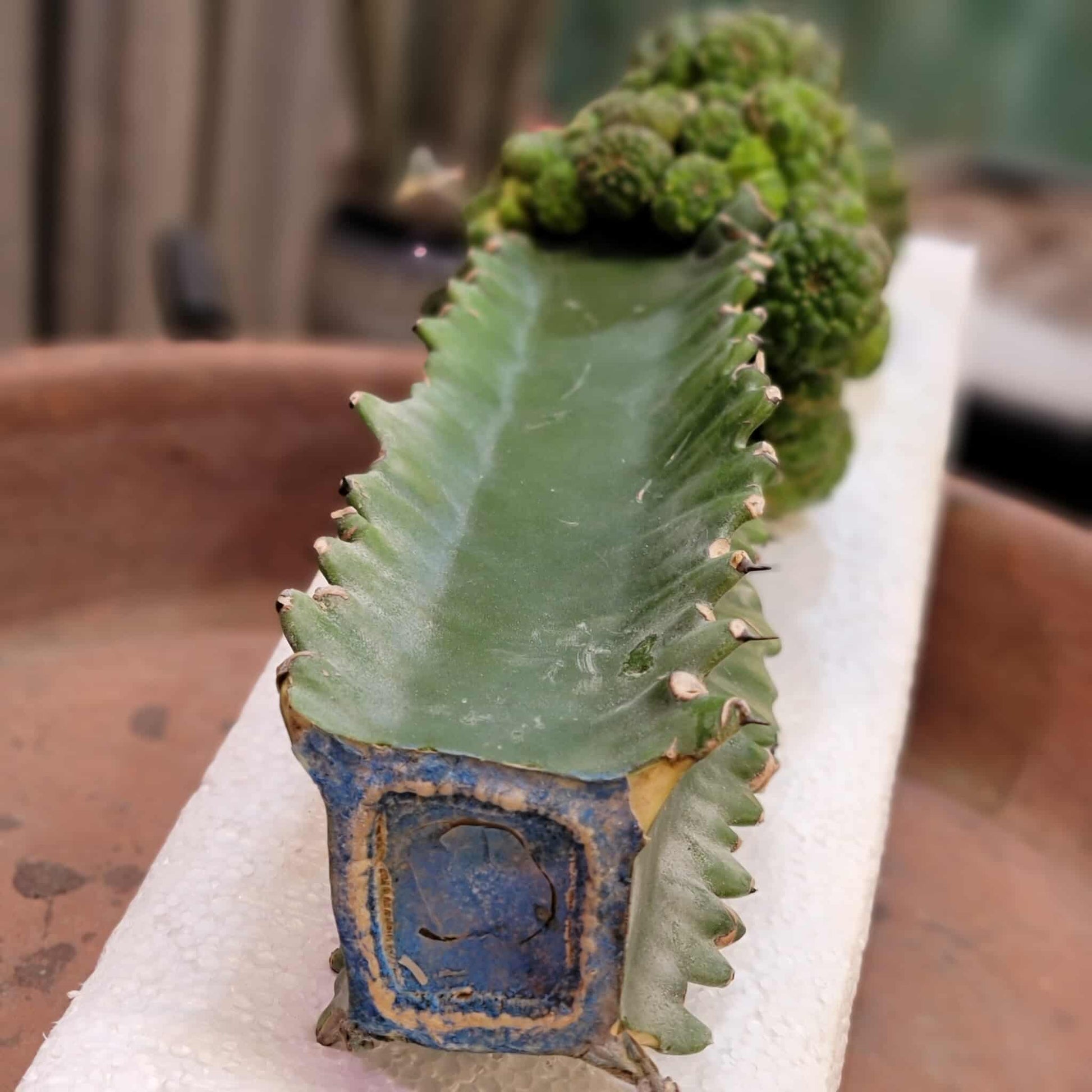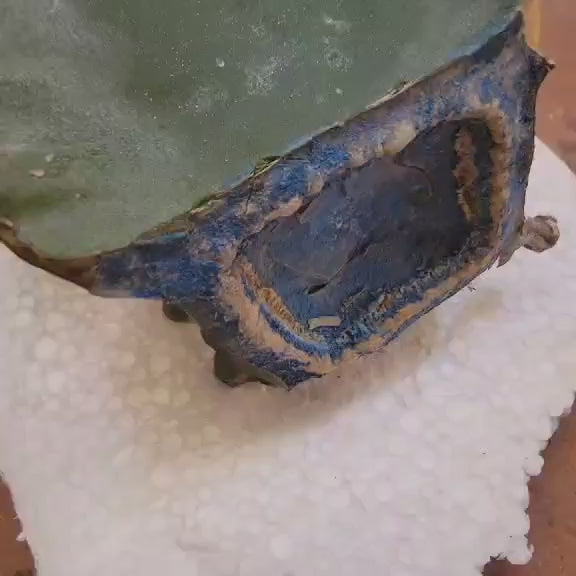Shangri-Ha Cactus Ranch
Euphorbia gymnocalycioides - HUGE Cluster
Euphorbia gymnocalycioides - HUGE Cluster
Couldn't load pickup availability
Euphorbia gymnocalycioides - HUGE Cluster - LOADED!
You will receive this exact, HUGE grafted specimen featuring too many heads to count!.
Scion measures 7" tall x 4.5" wide.
Entire specimen measures 11" tall above the soil line.
Showcased here in one-of-a-kind handmade pottery (sold separately).
Roots as shown.
Will be shipped bare root.
Euphorbia gymnocalycioides is a captivating and unusual succulent known for its resemblance to the cactus genus Gymnocalycium, hence its name, which means "resembling Gymnocalycium". This similarity is a fascinating example of convergent evolution, where different species develop similar traits in response to similar environmental pressures, in this case, adaptation to hot, dry desert conditions.
Key characteristics
· Appearance: This small succulent has a deep green, knobby, globular to shortly cylindrical body, growing up to 12 cm tall and 10 cm wide. It develops prominent tubercles arranged in a striking spiral pattern. Under full sun, the plant can take on a bluish-green hue, sometimes developing a dark tan or purplish tinge. Minute spines are present only on seedlings and new growth. The plant produces rudimentary, ephemeral leaves that quickly fall off, leaving behind small white leaf scars on the tubercles.
· Flowers: The flowers are small, brown, and typically grow around the center of the plant during the summer blooming season. They are arranged in simple or occasionally branched cymes (clusters).
· Origin and habitat: Native to the Sidamo province of Southern Ethiopia, Euphorbia gymnocalycioides thrives in well-draining, limestone-rich soils within sparse Acacia bushland at an altitude of 1350 meters.
· Toxicity: Like other euphorbias, it produces a milky white sap, or latex, that can cause skin irritation or eye damage, so handle with care. Wash hands thoroughly after handling to prevent accidental contact with eyes or mouth.
Cultivation and care
· Growing on own roots vs. grafting: While it has a reputation for being challenging to grow on its own roots, it can be grown easily from seed (though very slowly). It is often grafted onto more vigorous rootstocks like *Euphorbia canariensis* or *Euphorbia resinifera* for convenience and faster growth. Grafted plants can be degrafted by those wishing to grow them on their own roots.
· Potting medium: Requires a well-draining, mineral-rich potting mix, like one formulated for cacti and succulents. A mix of potting soil, coarse sand or gravel, and perlite or pumice also works well. Terracotta or clay pots are ideal for drainage.
· Sun exposure: Prefers full sun to light shade. Too much direct sun, especially in hot climates, can cause scorching. A pale green color indicates insufficient light.
· Watering: Water only when the soil is completely dry to the touch. Overwatering can lead to root rot. During the active growing season (spring and summer), water every 2-3 weeks, reducing to once a month or less during the dormant fall and winter months. Shriveled leaves may indicate a need for more water.
· Temperature: Thrives in warm, dry conditions, ideally between 65°F to 85°F (18°C to 29°C). It is sensitive to frost and should be protected from temperatures below 50°F (10°C).
· Fertilization: Fertilize with a balanced micronutrient solution once a month during the growing season (spring and summer). Avoid fertilizing during the dormant period.
· Propagation: Can be propagated by seeds or stem cuttings. Stem cuttings are the more common and easier method.
Special notes
· Euphorbia gymnocalycioides is highly sought after by collectors due to its unique appearance and slow growth rate, according to LLIFLE.
· The variegated form, Euphorbia gymnocalycioides f. variegata, is particularly prized by collectors for its cream or pale-green patches on the tubercles.
